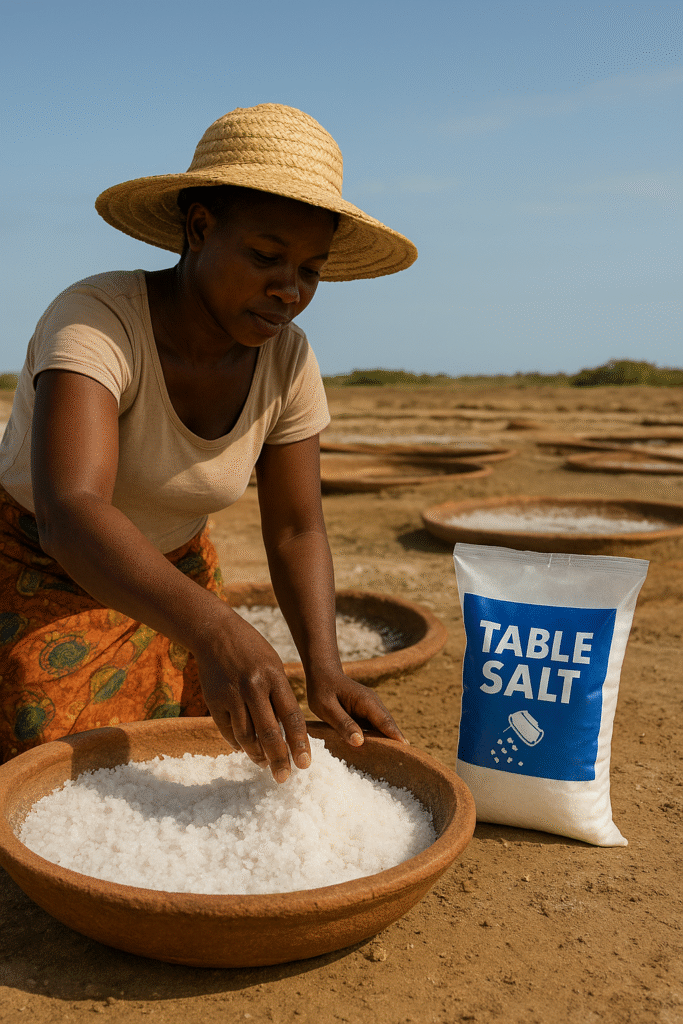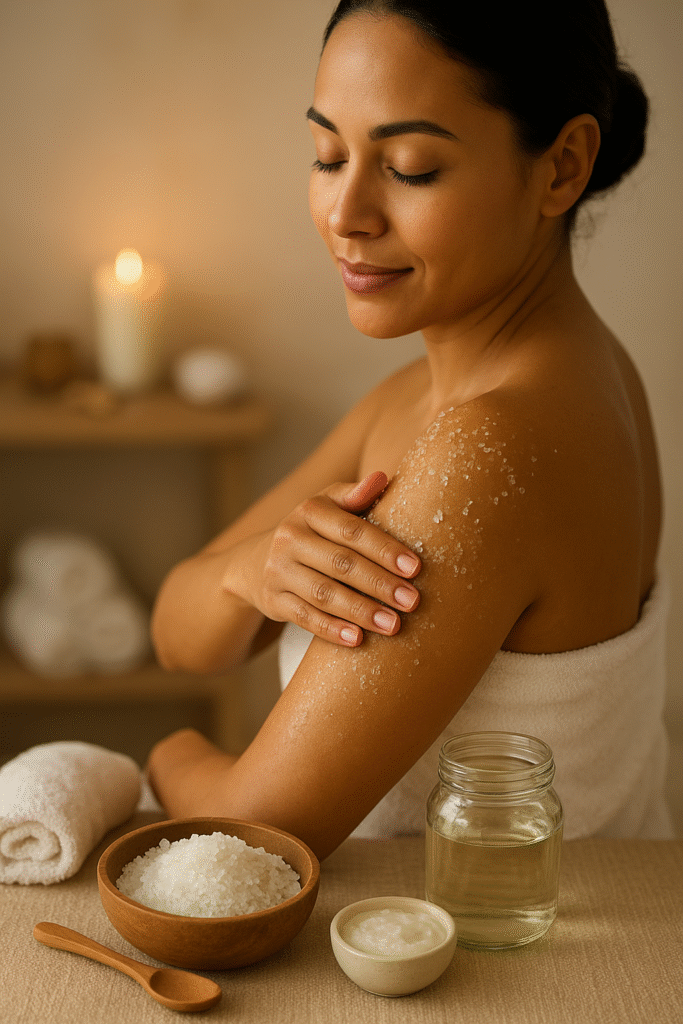🌊 What is Sea Salt?

Sea salt is the mineral-rich crystal formed when seawater evaporates under the sun and wind. Harvested from ocean, bay, or saline lake waters, it’s been used for thousands of years as currency, preservative, culinary enhancer, and healing mineral.
Today, sea salt is enjoying a renaissance—not just as a gourmet ingredient, but as a natural preservative, therapeutic agent, and wellness staple in both cottage industries and large-scale manufacturing.
🏡 Cottage Uses of Sea Salt
In coastal communities across the Mediterranean, West Africa, Southeast Asia, and Central America, traditional salt harvesting is still alive and well. It often involves:
- Channeling seawater into shallow clay or stone pans
- Allowing evaporation by sun and wind
- Hand-raking the remaining salt crystals
These artisanal methods yield unrefined, mineral-dense sea salts—often sold at local markets or used domestically.
Traditional and small-scale uses include:
- Culinary seasoning: Richer flavor than table salt, used in cooking and food preservation
- Fermentation and curing: Key in making pickles, fish, cheeses, and cured meats
- Folk medicine: Dissolved in warm water for sore throats, skin soaks, or mineral baths
- Spiritual cleansing: Used in some cultures to “purify” the home or body
Cottage industries also produce herbal salt blends, bath soaks, and salt scrubs—all with minimal equipment and high added value.
🏭 Industrial Applications of Sea Salt
Sea salt plays a significant role in modern manufacturing, often favored for its natural mineral content and minimal processing. Its purity, texture, and trace elements make it a valuable ingredient across food, beauty, and chemical industries.
🍽️ 1. Food & Beverage Industry
Sea salt is used in:
- Processed snacks and seasoning blends
- Artisan breads and cheeses
- Specialty salts (e.g., smoked, fleur de sel, Himalayan pink)
- Meat curing, pickling, and fermentation
Unlike refined table salt, sea salt typically retains trace minerals like magnesium, potassium, and calcium—adding both flavor and functionality.
🧖♀️ 2. Skincare & Wellness
Sea salt is a favorite in spa treatments and natural beauty products due to its:
- Exfoliating texture
- Antiseptic properties
- Mineral detoxification benefits
Used in:
- Salt scrubs and body polishes
- Bath soaks and foot treatments
- Scalp exfoliants and mineral masks

🧪 3. Industrial and Chemical Uses
- Water softening systems
- Textile dyeing and leather tanning
- Soap making (as a hardener in cold-process soaps)
- Chlorine and caustic soda production via electrolysis of brine
🌿 Benefits of Sea Salt
When used responsibly, natural sea salt offers a wide range of culinary, cosmetic, and wellness benefits.
✅ Key Benefits:
- Flavor enhancer: Adds depth, texture, and mineral complexity
- Electrolyte support: Helps maintain hydration and nerve function (especially in heat or after exercise)
- Skin health: Sea salt baths may soothe eczema, acne, and inflammation
- Detoxification: Draws out toxins through the skin in warm water soaks
⚠️ Note: Sea salt is still sodium chloride, so moderation is key—especially for people with hypertension.
🌍 Sustainability & Ethics
Sea salt is often considered one of the most eco-friendly salts due to its low-impact production process—particularly when harvested manually or through solar evaporation.
🌱 Environmental Considerations
- Minimal energy input: Solar evaporation uses no fuel or machinery
- Zero waste: No chemical refining or byproducts
- Habitat-friendly: Many salt flats double as protected wetlands for birds and marine life
🤝 Ethical & Cultural Preservation
- Preserves heritage crafts: Traditional salt farming supports ancestral knowledge
- Supports coastal livelihoods: Many salt farms are family-owned or cooperative-managed
- Organic options are growing, particularly in regions like the Philippines, Ghana, and Mexico
✍️ Final Thoughts
Sea salt is one of those rare ingredients that’s as humble as it is profound—a mineral born from wind and water, carrying the memory of the ocean into every grain. Whether you’re seasoning sourdough, blending bath salts, or preserving traditional techniques, sea salt continues to offer a clean, sustainable, and meaningful connection between people and nature.
Want to know how sea salt compares with Himalayan pink or black lava salt? Don’t miss our upcoming post: “Know Your Crystals: Gourmet Salts from Around the World.”
📚 References
- Young, D., & McCord, C. (2013). Sea Salt vs. Table Salt: Health Benefits and Processing. Journal of Culinary Science & Technology, 11(4), 308–317.
- FAO. (2020). Artisanal Salt Production: A Sustainable Livelihood for Coastal Communities.
- International Journal of Dermatology. (2010). Effectiveness of sea salt baths in managing atopic dermatitis.
- Salt Institute (2023). Uses and Applications of Natural Sea Salt in Industry.
UNESCO. (2021). Intangible Cultural Heritage: Traditional Salt Farming Practices.


Leave a Reply